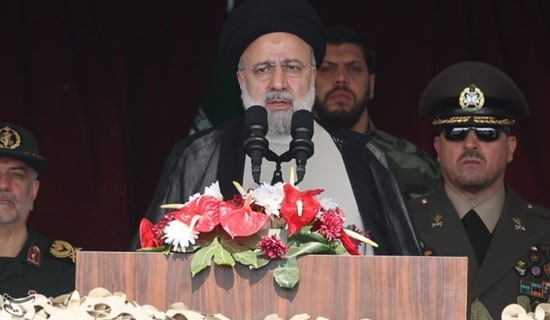The following is an op-ed by MEMRI Executive Director Steven Stalinsky that was originally published in USA Today on February 20, 2019.
Terrorist groups usually find ways to exploit the ever expanding services offered by major online platforms and tech companies, and Amazon Drive is no exception. Designed for storing and sharing photos, videos, PDFs and other forms of content, it has been adopted by the Islamic State, al-Qaeda and other organizations as a stable and reliable platform for disseminating their content. They upload it and then share the links to it with followers and sympathizers, primarily using the encrypted messaging app Telegram — terrorists' "app of choice."
Amazon Drive, established in 2011 and previously known as Amazon Cloud Drive, can store subscribers' photos, videos and other files for access from mobile devices, desktops or Amazon Fire devices. According to the Amazon website, "All photos, videos and other files you upload to Amazon Drive are securely and privately stored in your Files and your Amazon Photos library."
While Amazon has guidelines for its many platforms, including specific bans on terrorism, "bigotry, hatred, or illegal discrimination," or the use of its services by anyone who is "the subject of U.S. sanctions or of sanctions consistent with U.S. law imposed by the governments of the country where you are using Amazon Services," it has not been proactive in removing terrorist content.
Terrorist activity and content on Amazon Drive is the subject of a new report by my organization, the Middle East Media Research Institute and its Cyber & Jihad Lab, documenting how ISIS and other groups like it have been using this free service. The examples in the report include Amazon Drive links to content such as videos by ISIS, audio messages by its leaders, and official newsletters and other content created by the group, its secondary media organizations and its supporters.
Besides Amazon Drive, terrorists are also uploading content to other major platforms and sharing it via Telegram — for example, Internet Archive, Dropbox and Google Drive. Other services less widely used for uploading include Vimeo, Dailymotion, Sendvid and MediaFire, as well as Russian platforms such as Cloud.mail.ru, My.mail.ru and Ok.ru/video.
SUPPORT OUR WORK

Amazon Should Challenge Terrorists Online
Leading tech companies like YouTube, Facebook and Twitter are all now heading efforts to challenge terrorists online and on their platforms, having over time shifted their policies to reflect their maturing approach to the need to remove this content. Telegram, which remains defiant, is a notable exception. As for Amazon, not much is known about CEO Jeff Bezos' approach to terrorist content.
Bezos has gone on record as "totally like-minded" with Apple in its fight against government investigators who wanted access to the iPhone used by the December 2015 San Bernardino jihadis and had asked Apple to break encryption programs. He said Amazon was embracing similar technology to make it difficult for government officials to gain access to personal information.
In addition, Bezos told Business Insider that the debate over data privacy is "one of the great questions of our age" and added: "How do you safeguard people's physical safety against terrorists and bad actors all over the world, and how do you balance that against privacy? These are very challenging questions. And we're not going to answer them, even in a few years. I think it's going to be an ongoing thing for quite a while."
Big Tech Must Confront These Threats
By all accounts, 2018 was a good year financially for Bezos. Amazon made record profits in 2018. On Jan. 7, it became the most valuable public company in the world. For the second year in a row, Bezos ranks as the richest man in modern history. Additionally, as part of Amazon's expansion this past year, it announced that it was opening new headquarters in a Virginia suburb of Washington, D.C. And it is expected to spend about $5 billion on content for its Prime Video, holding talks with Viacom's Paramount Pictures and Sony.
As Amazon's popularity grows because of the convenience and security it offers, so does its responsibility to ensure that those using it for criminal purposes do not benefit from its services. Terrorist groups' use of Amazon Drive further underlines the fact that there is a need for tech philanthropists such as Bezos to devote their time and money to shaping guidelines and confronting the threat of terrorist content online. The many companies grappling with this content on their platforms, now including Amazon, highlight the need for industry standards on how to handle this threat.
The problem — and the solution — are much more complicated than the simple removal of terrorist content. Companies need to proactively monitor what’s on their platforms to be sure they are not inadvertently hosting it, not wait for outsiders to expose it. Their business models should include awareness of this issue, as well as taking responsibility for it.
*Steven Stalinsky, executive director of the Middle East Media Research Institute, is author of "American Traitor: The Rise and Fall of Al-Qaeda’s U.S.-born Leader Adam Gadahn."




